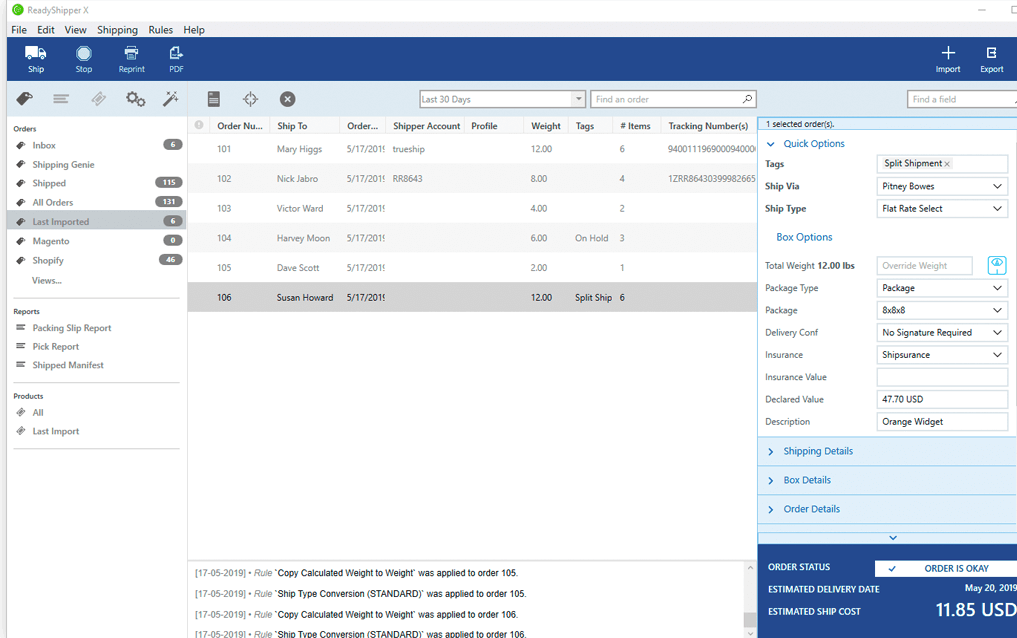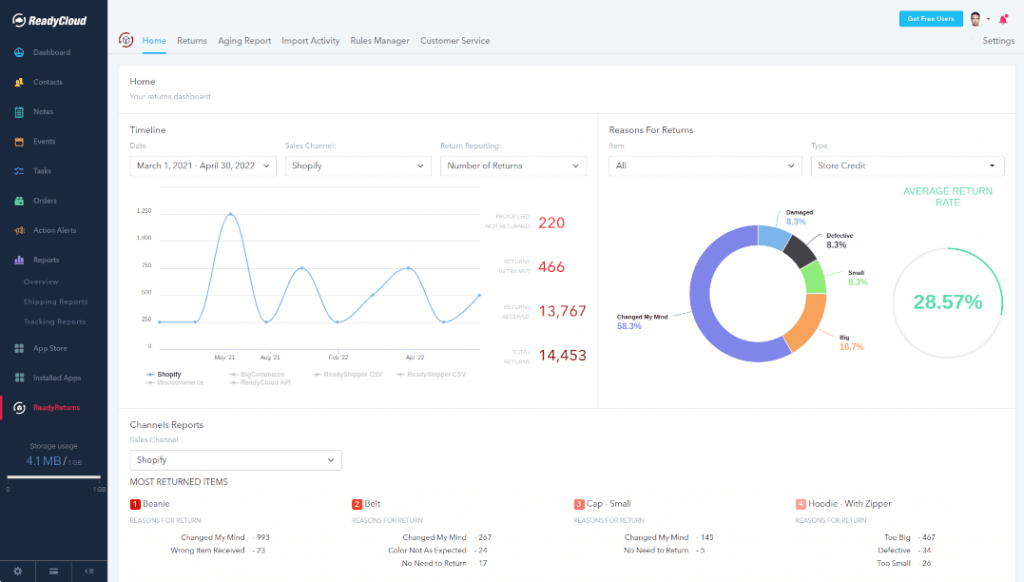How to Manage Shipping on Shopify

Shipping is a crucial aspect of any e-commerce business. Having a seamless shipping process not only improves customer satisfaction but also boosts your brand’s reputation. For Shopify users, managing shipping effectively can be a game changer.
“In 2025, competent shipping departments are adopting a multi-carrier approach utilizing USPS, UPS, FedEx and even regional carriers. It is not only about saving money; flexibility is essential. With multiple carrier options available, delays from one carrier are less concerning.
The ultimate key is having access to a shipping solution that integrates with all your carriers and offers real-time rate shopping and unique rate options. Don’t wait until it’s too late. Begin setting up test shipments now, and familiarize yourself with deadlines and additional fees each carrier imposes to gain a competitive advantage.” – Read Article on Forbes
Understanding the Importance of E-commerce Shipping
Before delving into the specifics of how to manage shipping on Shopify, it’s crucial to understand why e-commerce shipping is vital for your online store. Shipping is the bridge that connects your products to your customers, making it a key component of the overall customer experience.
When it comes to e-commerce, shipping involves more than just delivering products. It includes packaging, tracking, insurance, and, in some cases, returns. Efficient shipping can lead to increased sales and higher customer retention rates. On the other hand, inefficient shipping can result in lost sales and damaged customer relationships.
Here’s what you need to know: More than 66% of online shoppers have decided not to buy an item because of high shipping costs. Moreover, 93% of online buyers are encouraged to buy more products if free shipping options are available. These statistics show how crucial it is for online retailers to have an efficient shipping strategy.
Shipping Made Easy with Shopify
If you’re using Shopify as your e-commerce platform, managing your shipping process becomes significantly easier with the platform’s built-in features. Shopify offers a range of shipping options, allowing you to choose the one that best suits your business needs. Some of these options include free shipping, flat rate shipping, and exact cost shipping.
Shopify has partnered with leading carriers like USPS, DHL Express, UPS, and Canada Post, offering pre-negotiated rates. This means you don’t have to negotiate your shipping rates – Shopify has already done it for you.
What’s more, Shopify allows you to print shipping labels directly from the platform, saving you a trip to the post office. You can also schedule pickups with certain carriers directly from your Shopify admin.
Shopify Shipping Software: ReadyShipper X
While Shopify provides various shipping options, integrating a Shopify shipping software like can further streamline your shipping process. ReadyShipper X is a premium plugin for the ReadyCloud CRM suite that can be integrated with Shopify to automate your shipping tasks.
ReadyShipper X enables you to create custom rules and automated shipping tasks, saving you time and money. It also provides you with the lowest shipping prices possible. With ReadyShipper X, you can easily import and sort orders, browse for the best shipping rates, print shipping labels, and update your customers in just a few clicks.

To get started with ReadyShipper X, you need to create your ReadyCloud CRM account, and then add ReadyShipper X from the Appstore. You can start a 14-day free trial without any credit card requirement.
Developing a Winning Shipping Strategy
Now that you know how to manage shipping on Shopify and the role of Shopify shipping software, let’s talk about developing a winning shipping strategy. Remember, a well-thought-out shipping strategy can significantly improve your customer satisfaction and boost your sales. Here are some tips for creating an effective shipping strategy:
1. Determine Your Shipping Rates
One of the first things to consider when developing your shipping strategy is deciding your shipping rates. You can choose to offer free shipping, charge real-time carrier rates, offer a flat rate, or offer local delivery.
Free shipping can be an excellent way to reduce shopping cart abandonment. However, offering free shipping doesn’t necessarily mean you have to bear the shipping costs. You can increase product prices to cover shipping costs, absorb the shipping costs into your profit margin, or slightly increase product prices to cover partial shipping costs.
Charging real-time carrier rates is another option. Shopify’s shipping integrations can generate shipping options and live pricing from various carriers, allowing your customers to choose and pay for the exact service they want.
Flat rate shipping can be an effective option if your products have similar sizes and weights. This shipping method can become complicated if your product range varies in size and weight.
Finally, offering local delivery can be a great way to cut down on shipping costs and attract more local customers. In some cases, you can manage local delivery yourself without needing a carrier.
2. Choose Your Preferred Packaging
Packaging is an essential part of your shipping strategy. The type of packaging you choose can affect your shipping costs and your brand image. You can order free packaging from some carriers or invest in branded packaging.
Consider the weight and size of your packaging. Smaller and lighter packaging can help reduce your shipping costs. If your product line varies in weight and size, you may want to have a variety of packaging sizes and materials available.
3. Consider Shipping Insurance and Tracking
Depending on the value of the products you’re selling, shipping insurance and tracking can offer added security. Insurance provides you with recourse if a package gets lost or damaged. Tracking information allows your customers to track their package and know when to expect delivery.
4. Handle Customs for International Shipping
If you’re shipping internationally, you’ll need to include the proper customs documentation. These forms inform the customs officers at the country of import about the package’s contents, cost, and whether it’s a gift or merchandise.
5. Use Business Accounts
Consider setting up business accounts with your chosen carriers. Business accounts offer a variety of benefits, including discounts, better expense tracking, and a host of online tools to efficiently manage your shipping process.
Up Your Shipping Game on Shopify!
Shipping is a critical part of your e-commerce business. By understanding how to manage shipping on Shopify and utilizing Shopify shipping software such as ReadyShipper X, you can streamline your shipping process, improve customer satisfaction, and boost your online store’s success. Remember that shipping isn’t just about delivering products to your customers. It’s also about enhancing the overall customer experience.
Integrating ReadyCloud for Enhanced Shopify Headless Ecommerce Success
ReadyCloud leads the pack with our best-in-breed Shopify Headless Integration— it puts all the tools you need into one place, one browser tab and one connected system that was built for ecommerce—so that your business can succeed past the BUY button!

Growing businesses on Shopify, Shopify Plus and Headless can track customer interactions, personalize communications, track Tasks, improve customer retention, and even add Shipping Insurance, in just a few clicks in the dashboard.
ReadyShipper X streamlines shipping logistics, ensuring orders are fulfilled quickly and accurately, while ReadyReturns makes it virtually effortless to handle Shopify returns for both customers and businesses, reducing friction and enhancing the post-purchase experience.
Integrating ReadyCloud with your Shopify store ensures that all aspects of your ecommerce operations are optimized, leading to increased efficiency, customer satisfaction, and growth.
Getting started with ReadyCloud is straightforward. Sign Up for a free trial and easily connect it to your Shopify store to begin leveraging these advanced features right now.
What You Should Do Now
Here are 3 ways ReadyShipper X can help you instantly cut shipping costs, keep delivery promises, and scale fulfillment without adding headcount:
Schedule a Demo – See how ReadyShipper X combines on-premise speed with cloud flexibility to ship your orders faster and cheaper, delivering the speed customers expect at costs that protect your margins.
Start Your Free Trial of ReadyShipper X (No CC Required) – Get up and running in minutes with instant access to multi-carrier rate shopping, smart automation, and enterprise features.
Try ReadyCloud at No Cost – Why manage shipping and returns separately? Get ReadyShipper X, ReadyReturns, and more in one unified platform for faster fulfillment, fewer headaches, and happier customers.
Share On:









